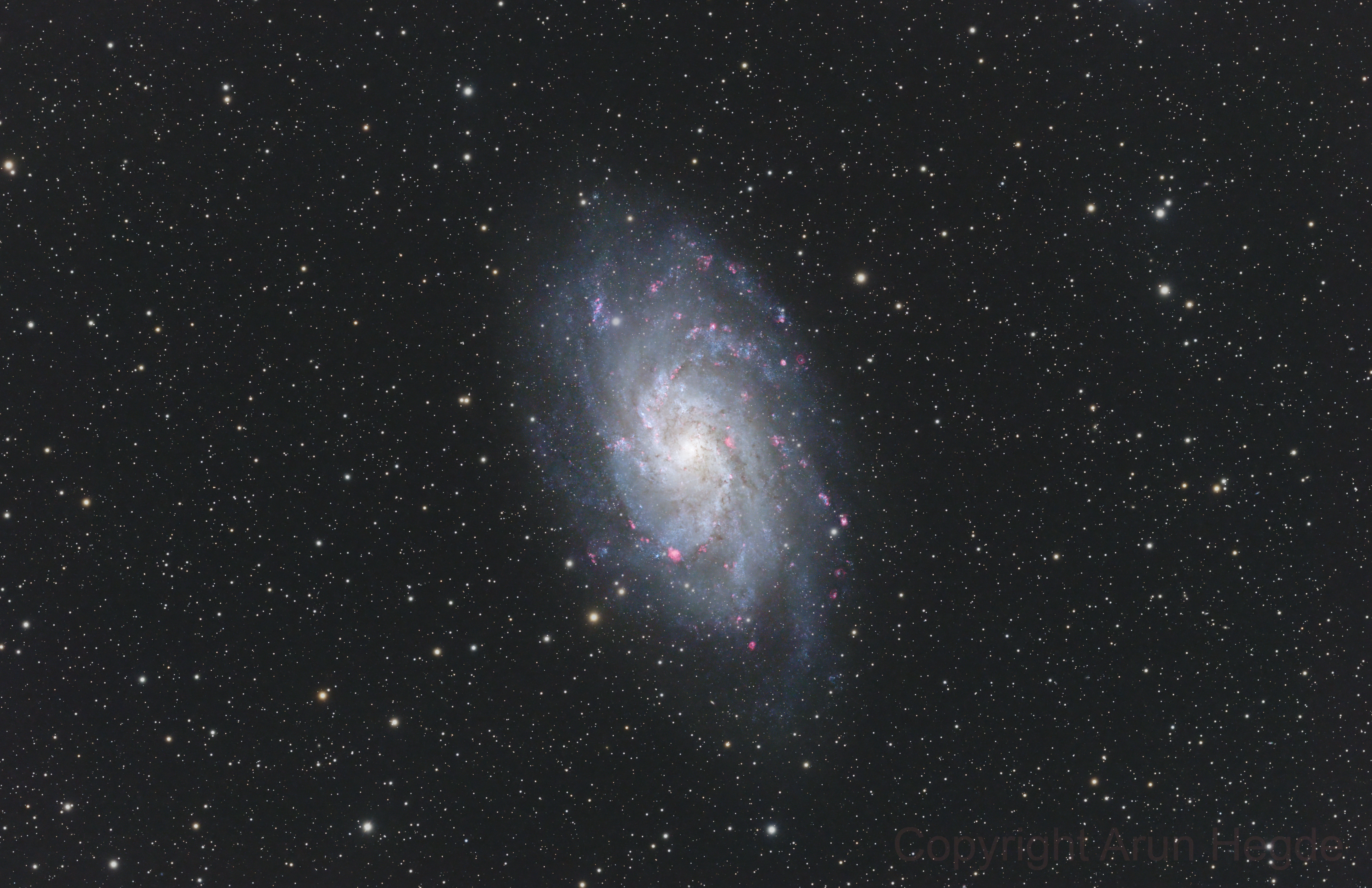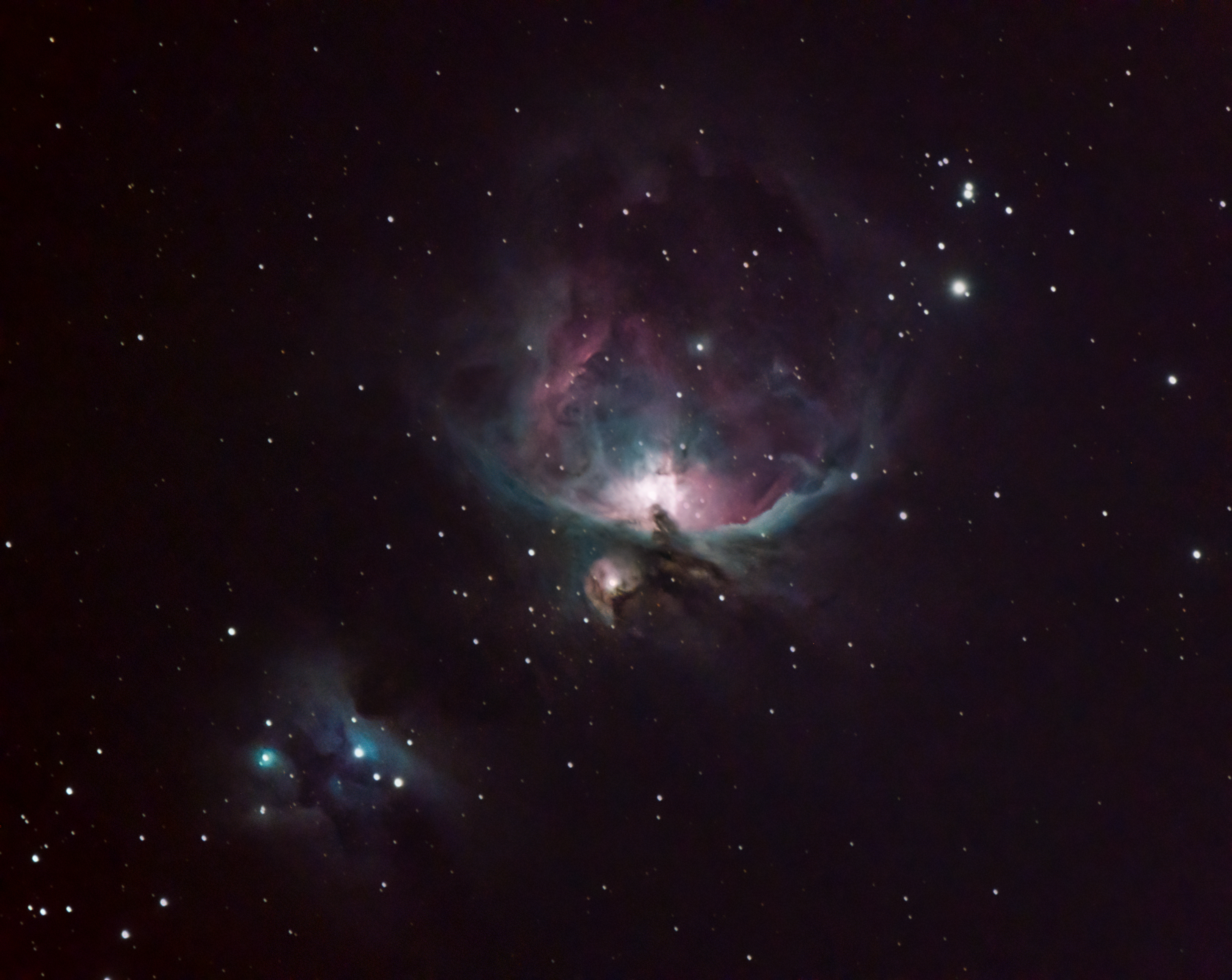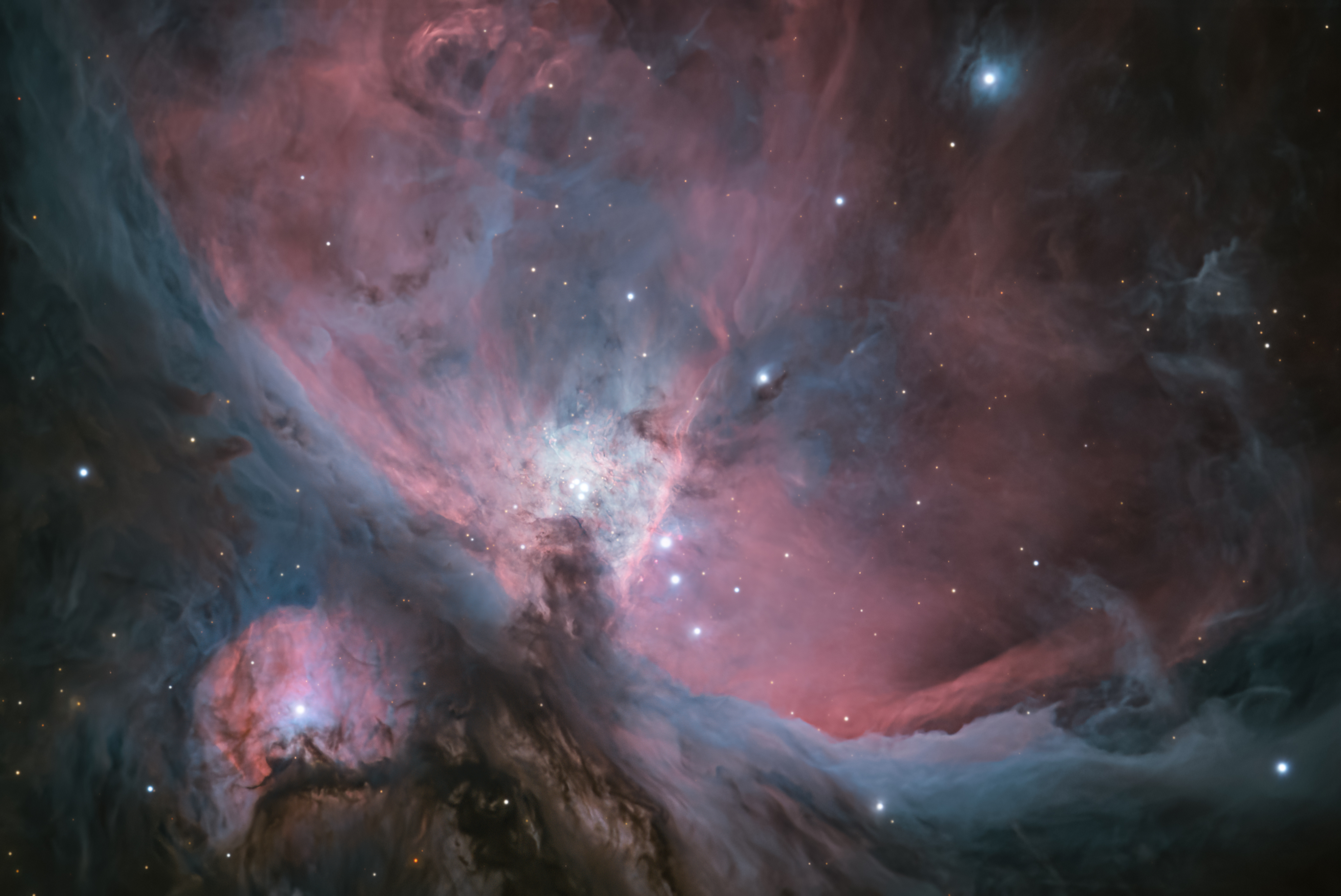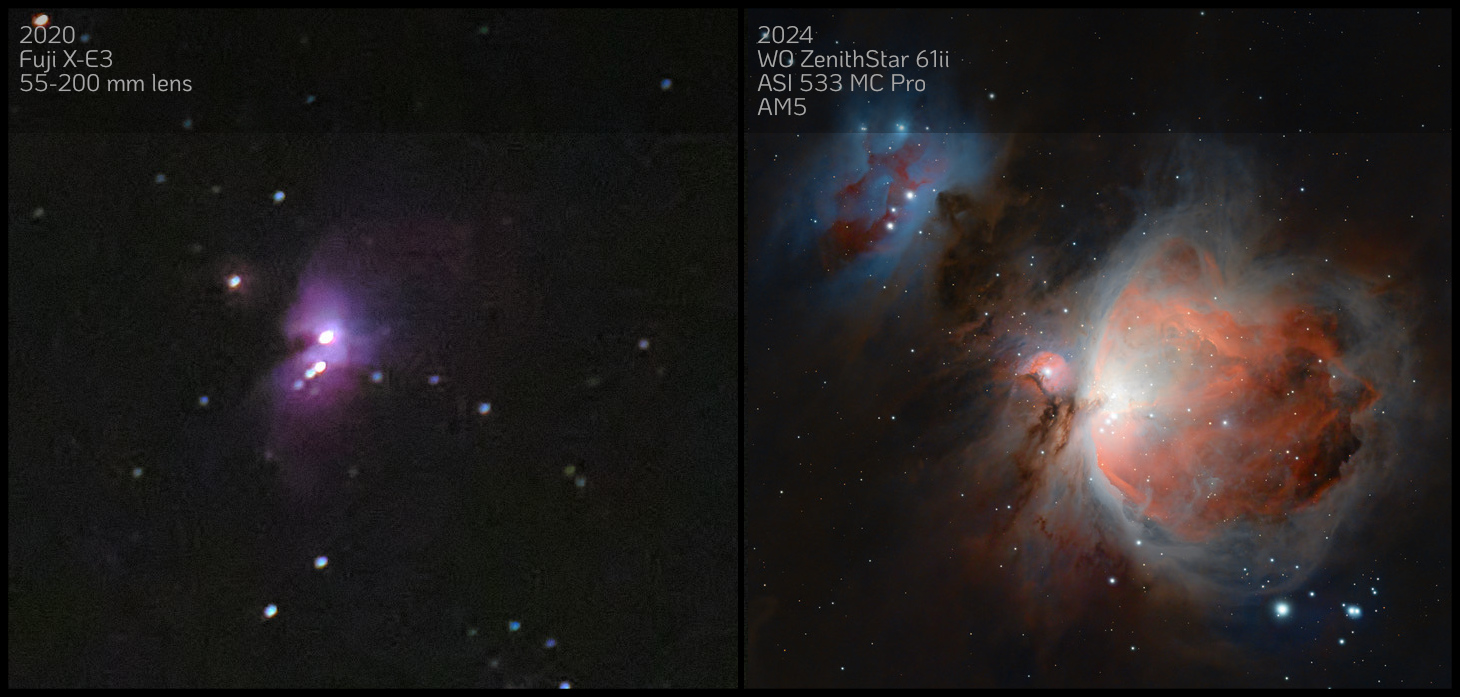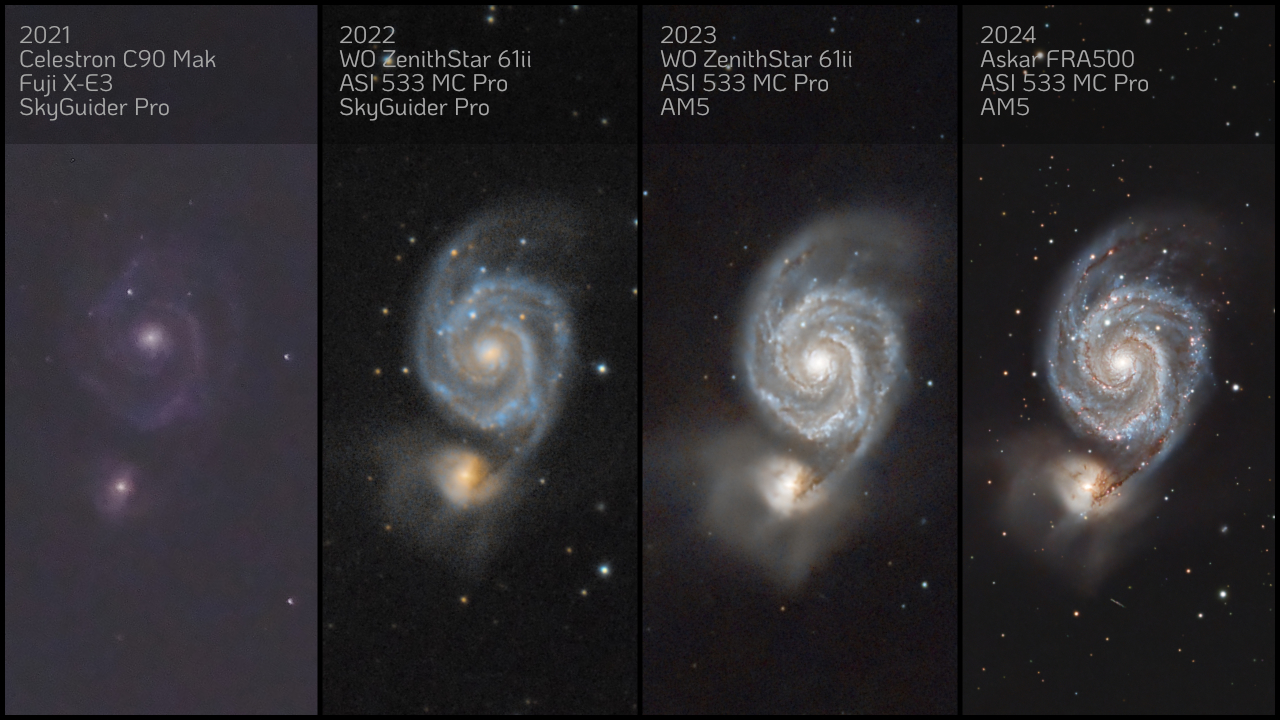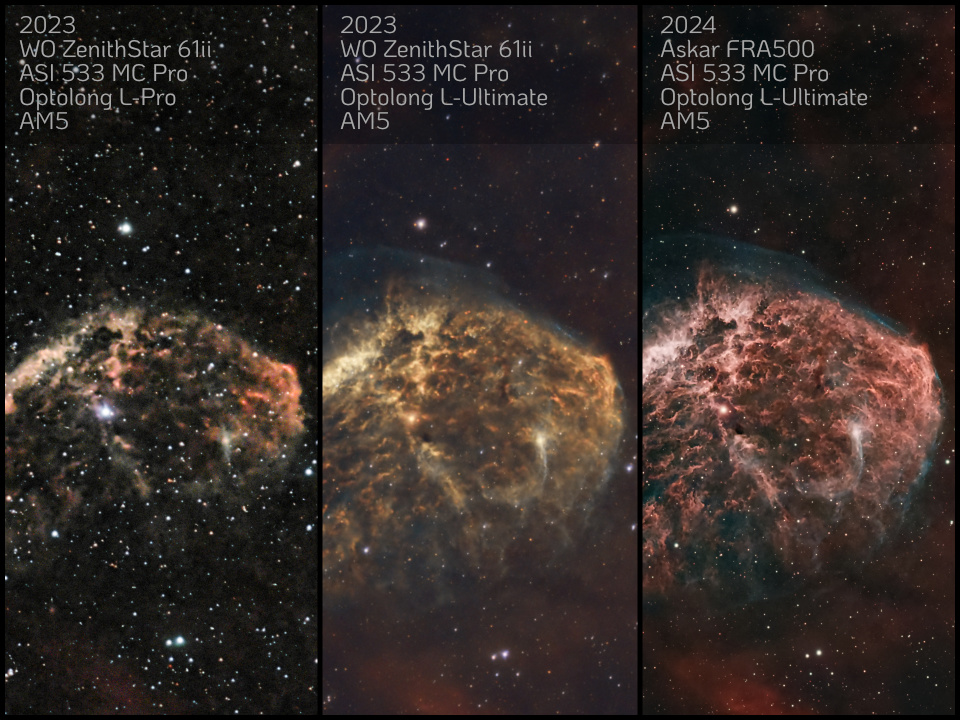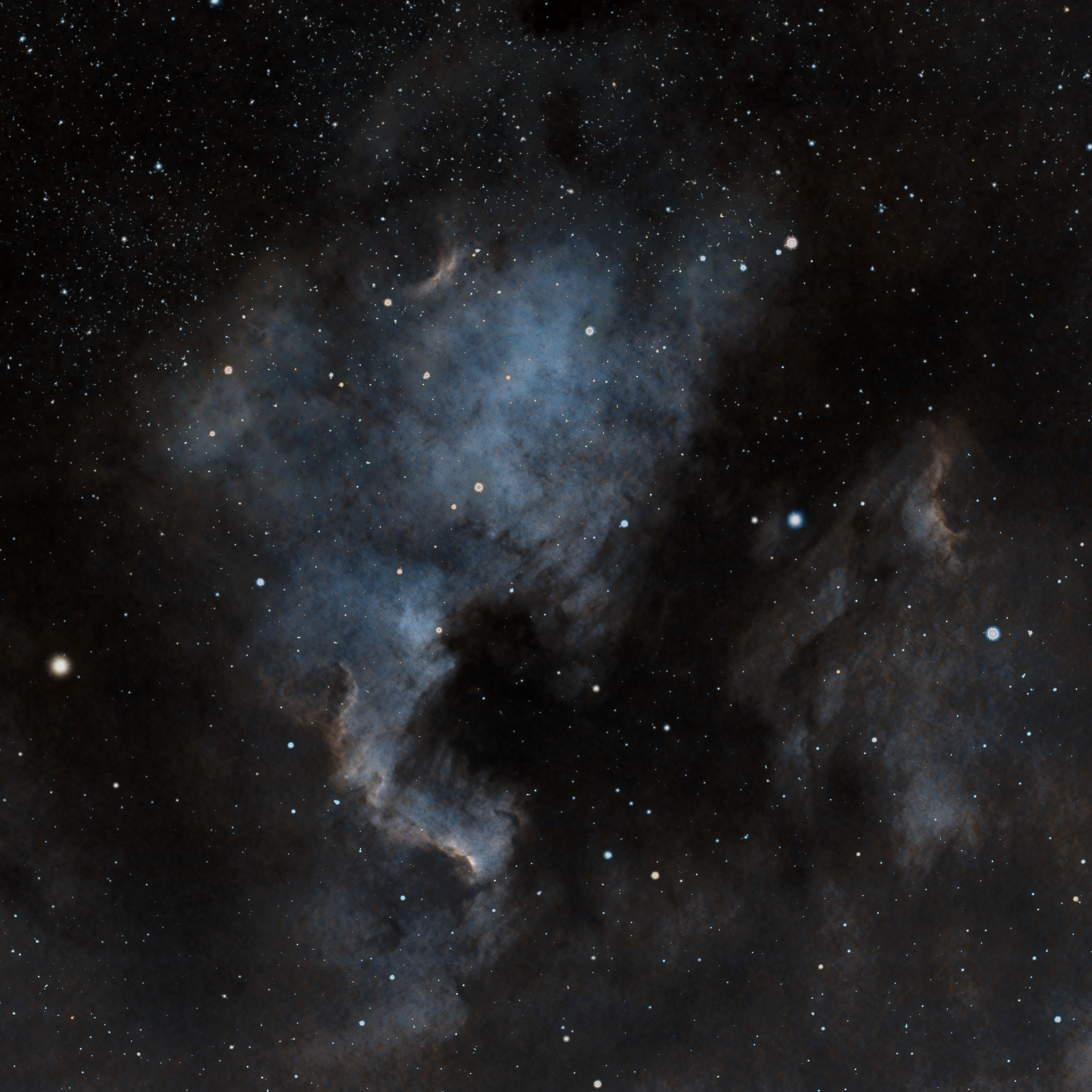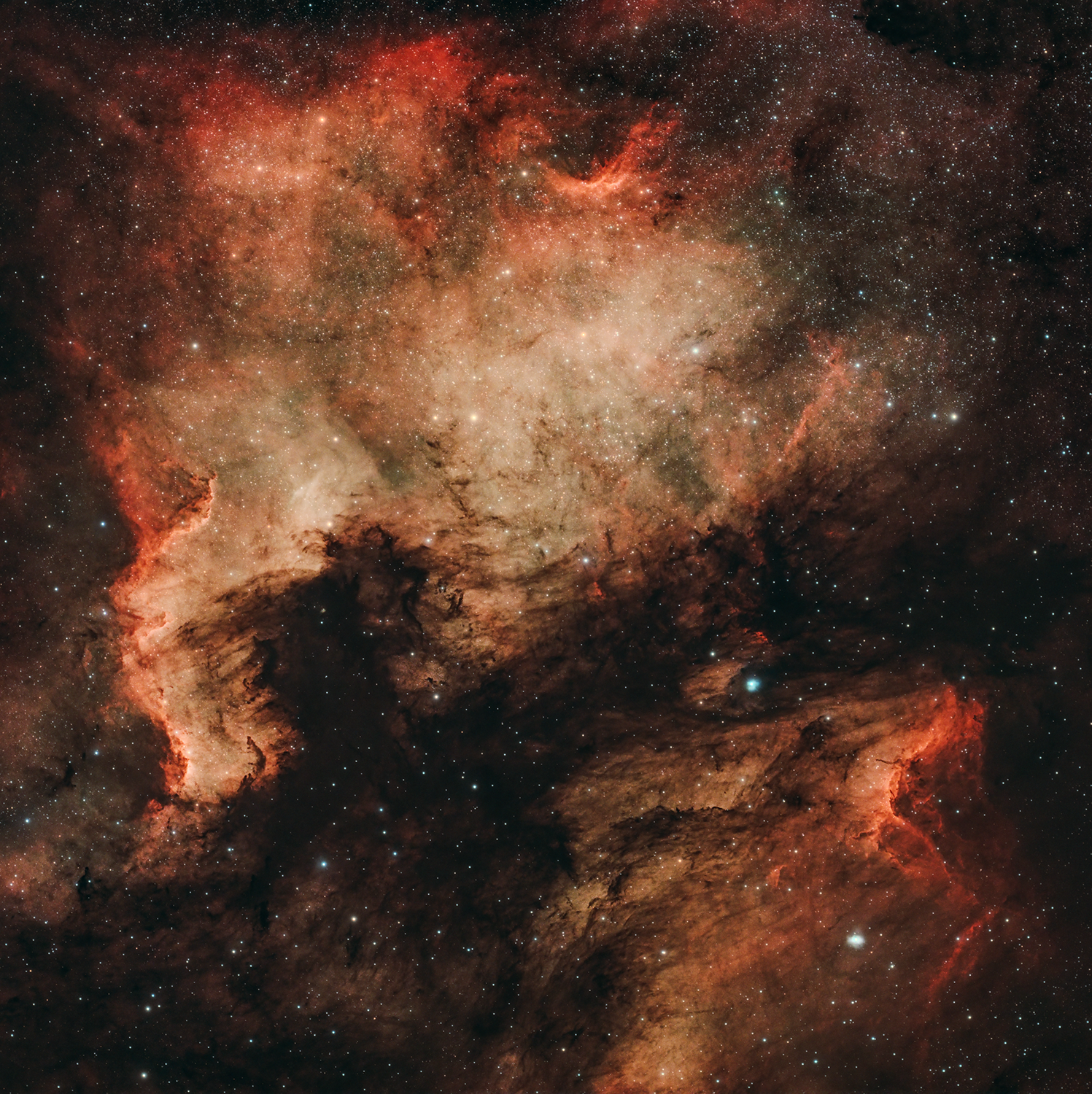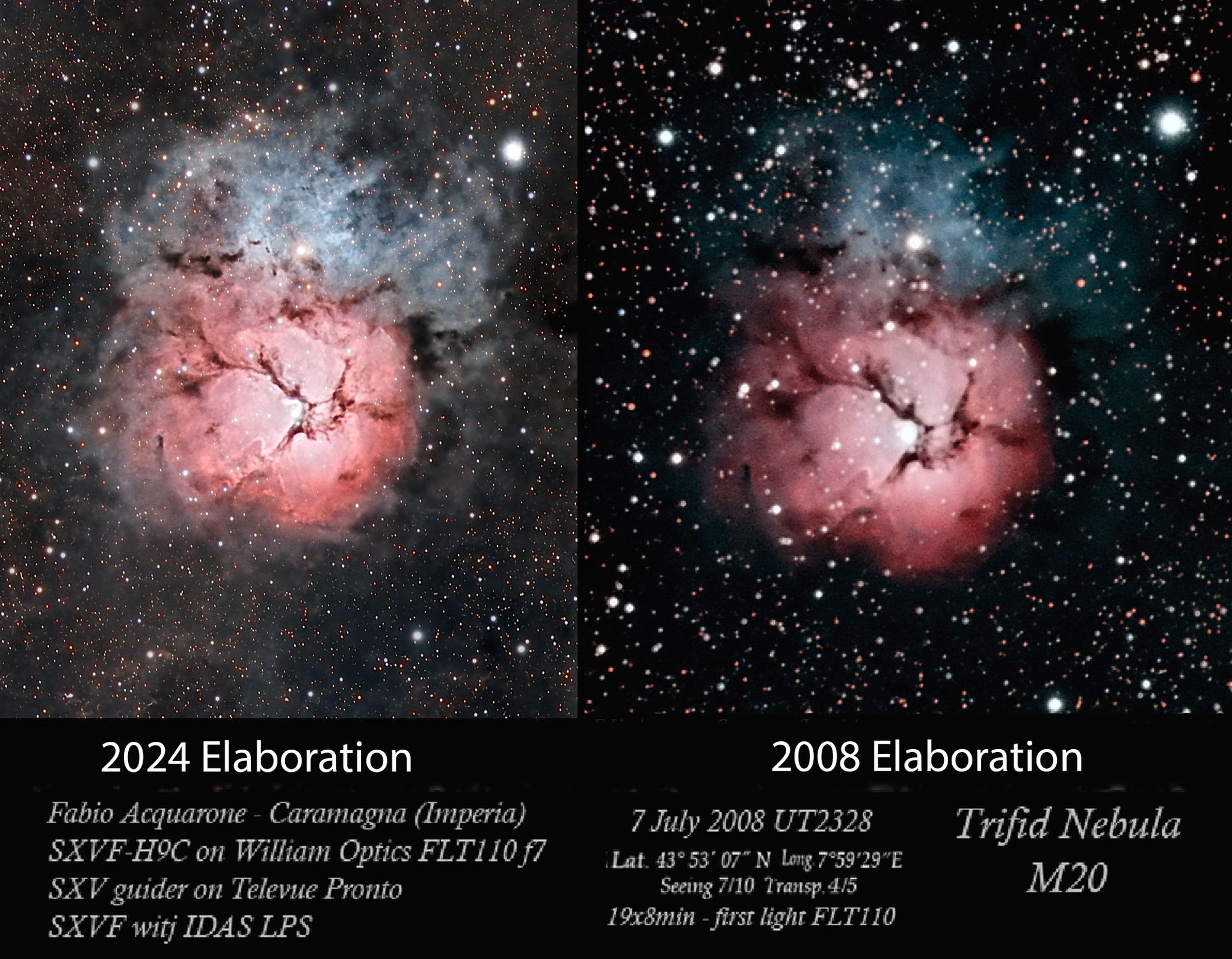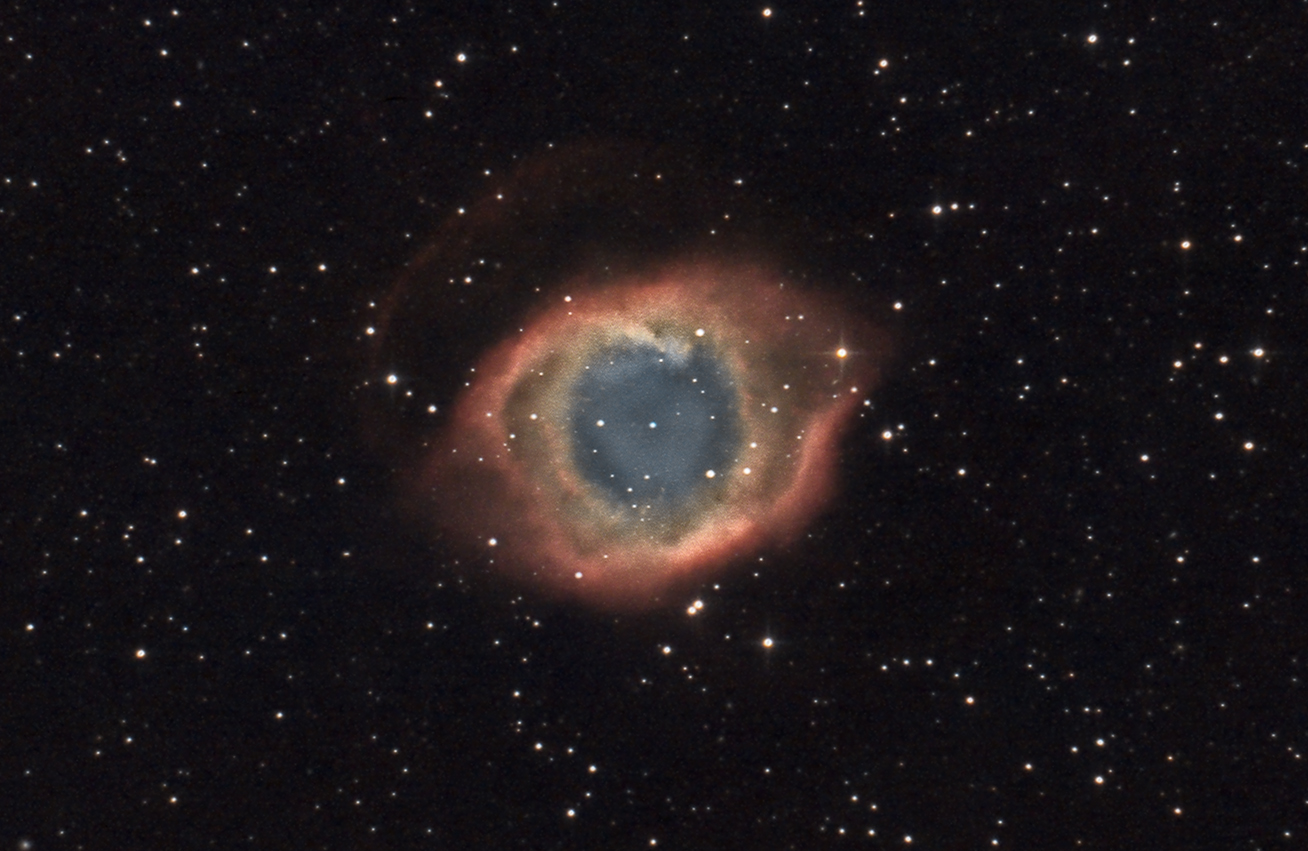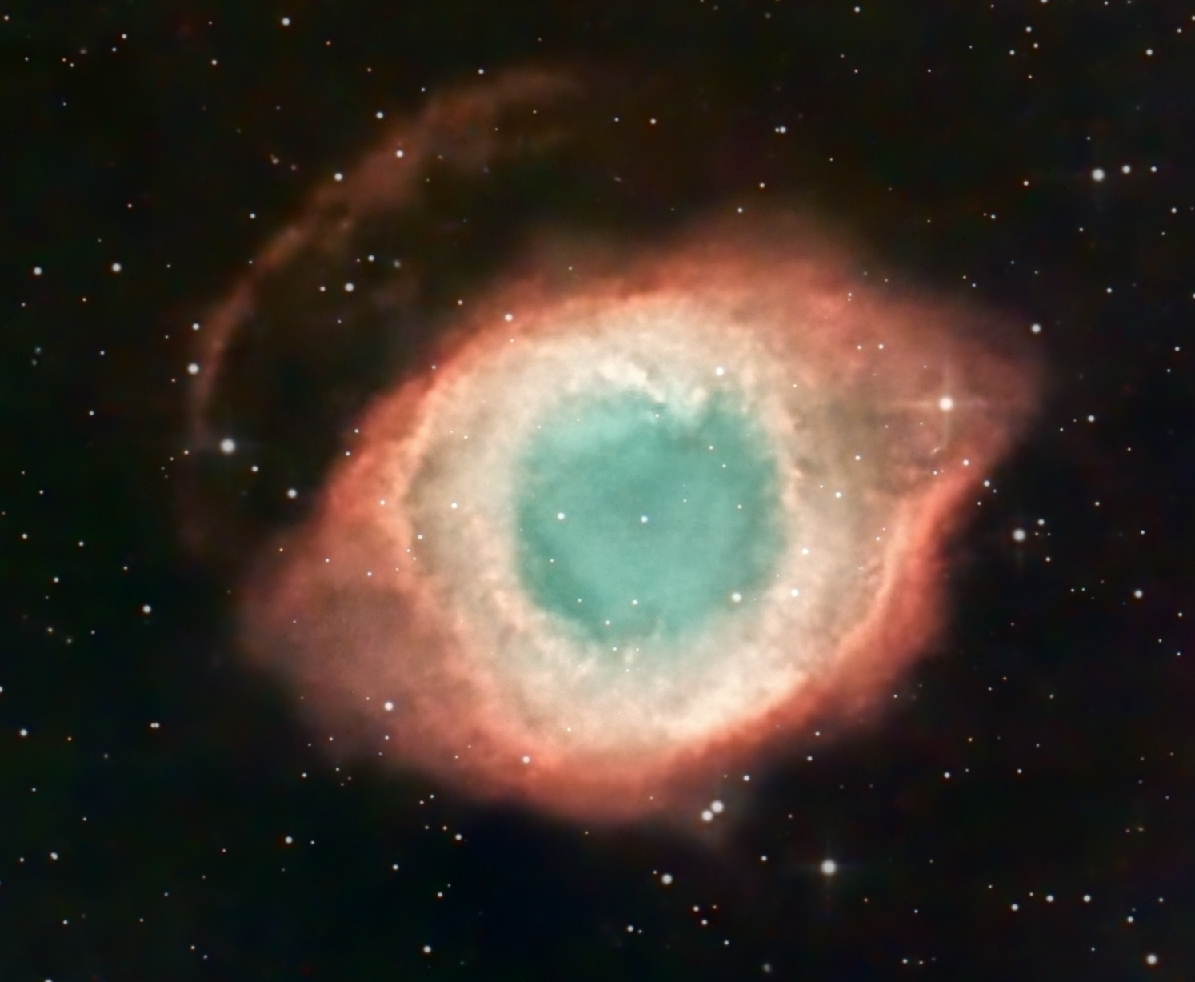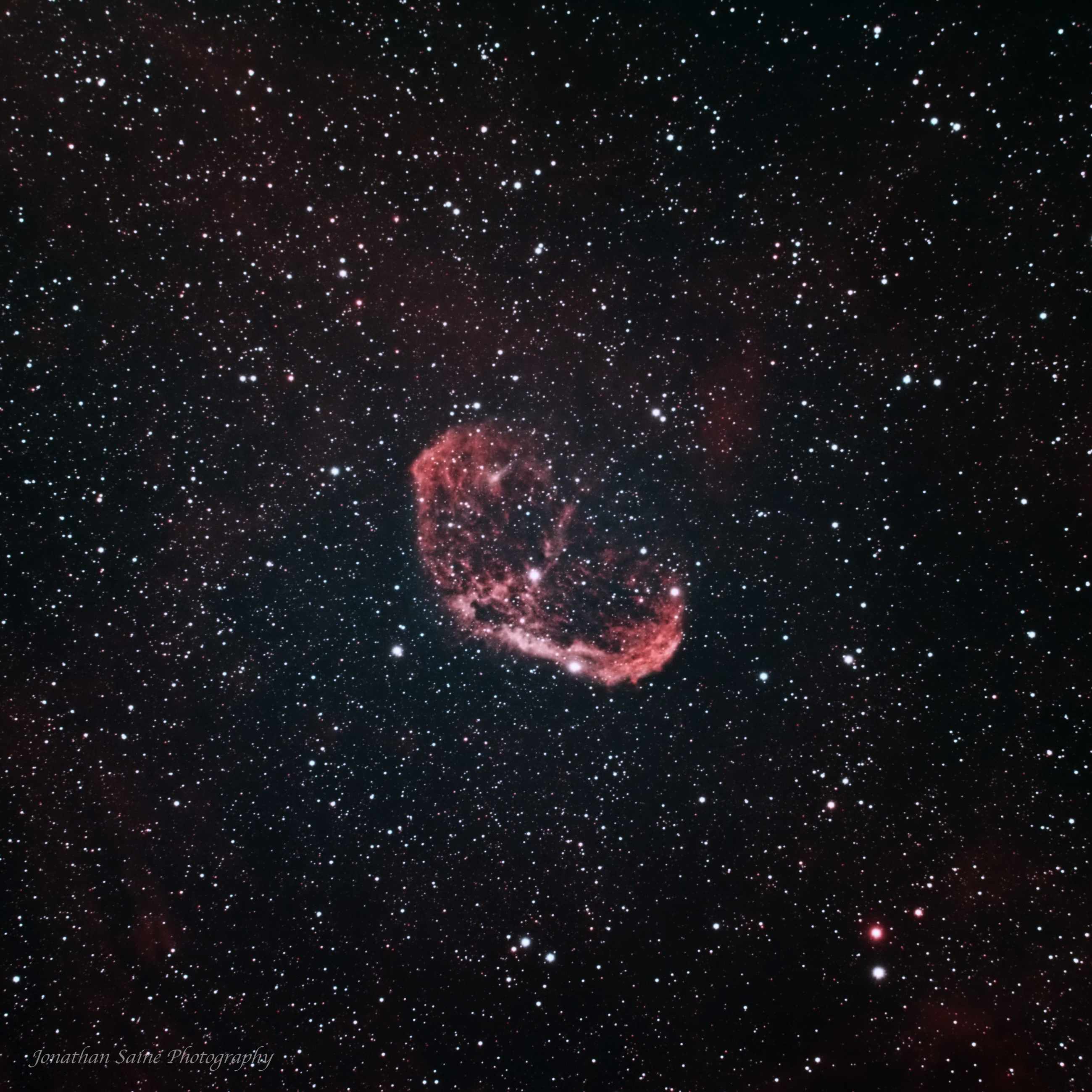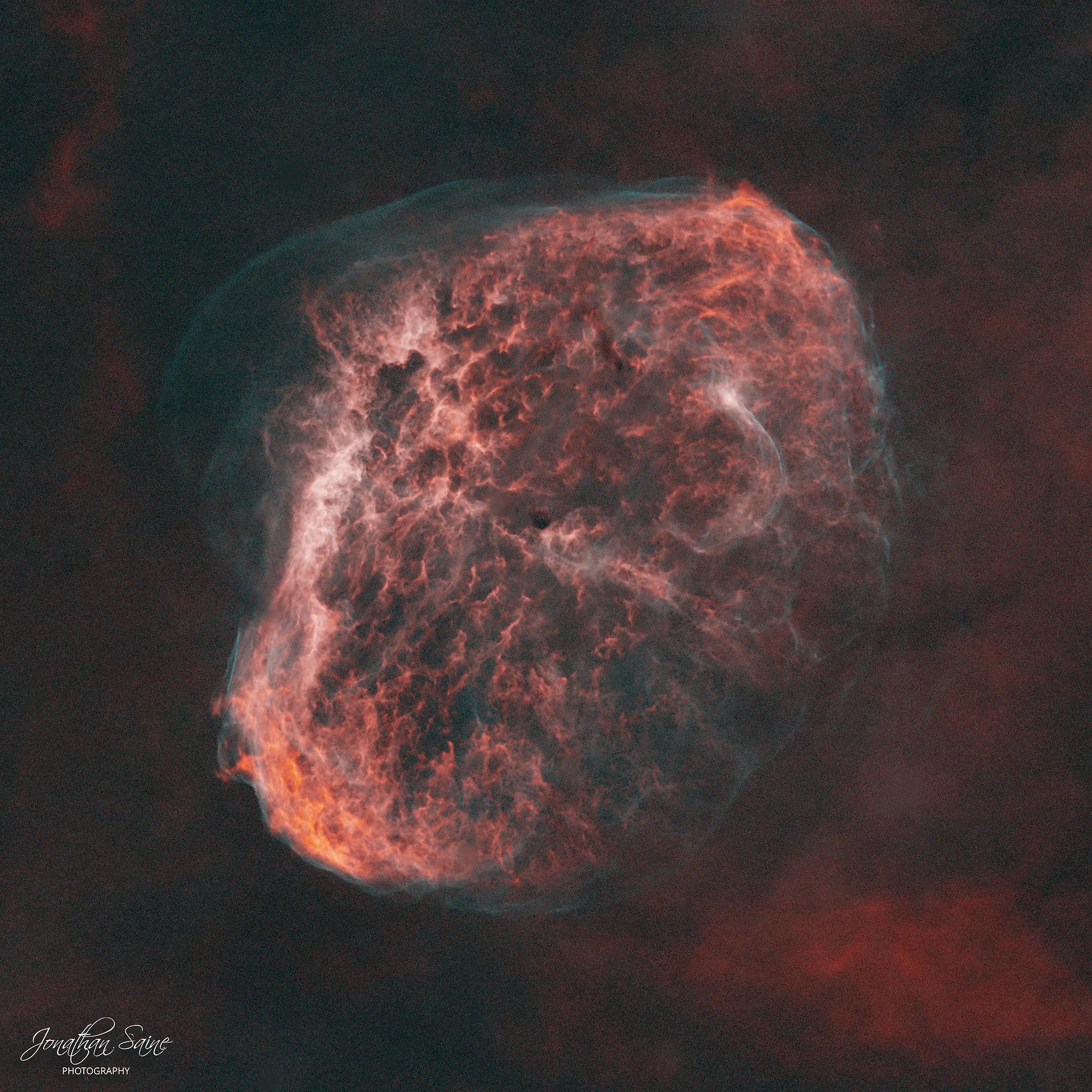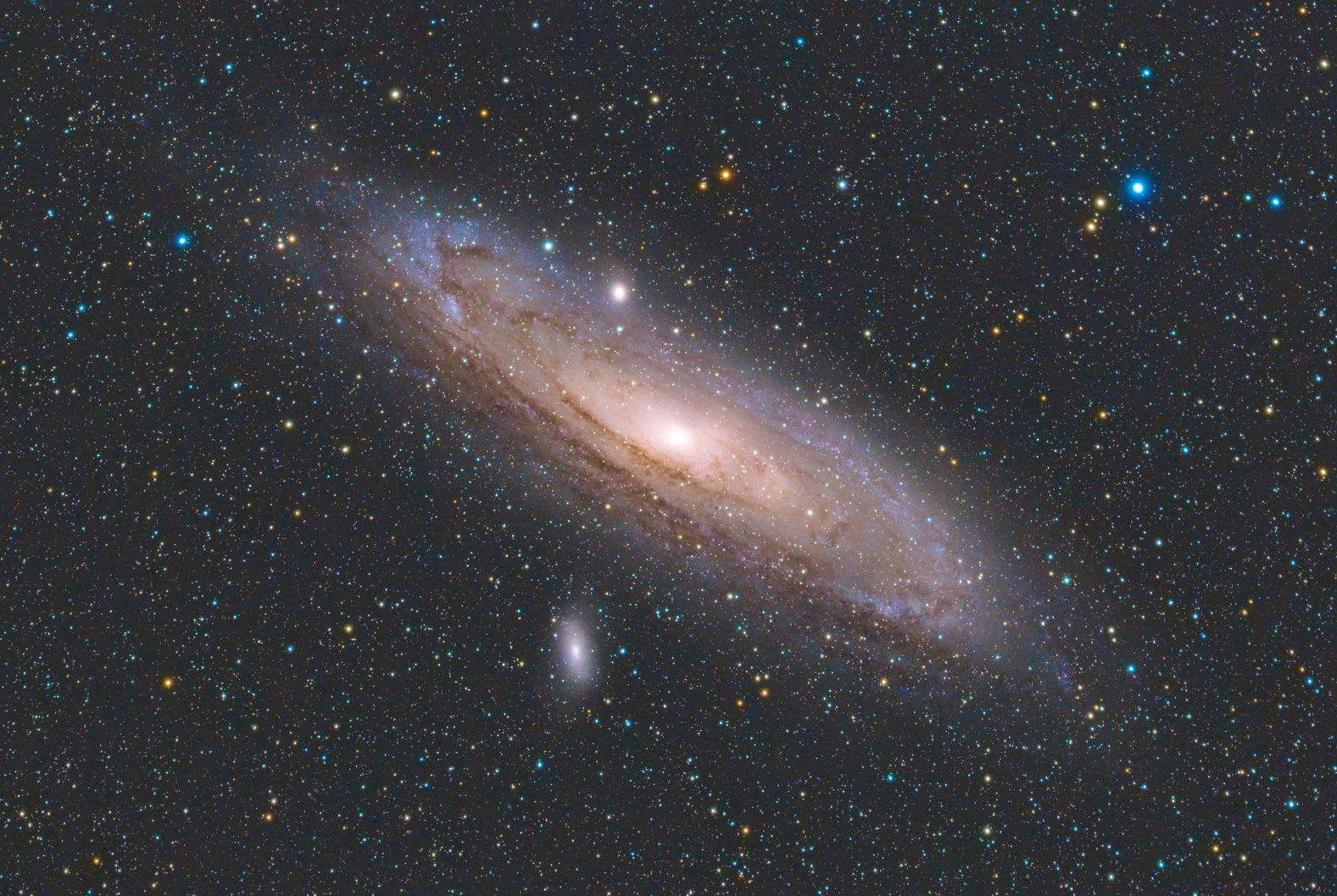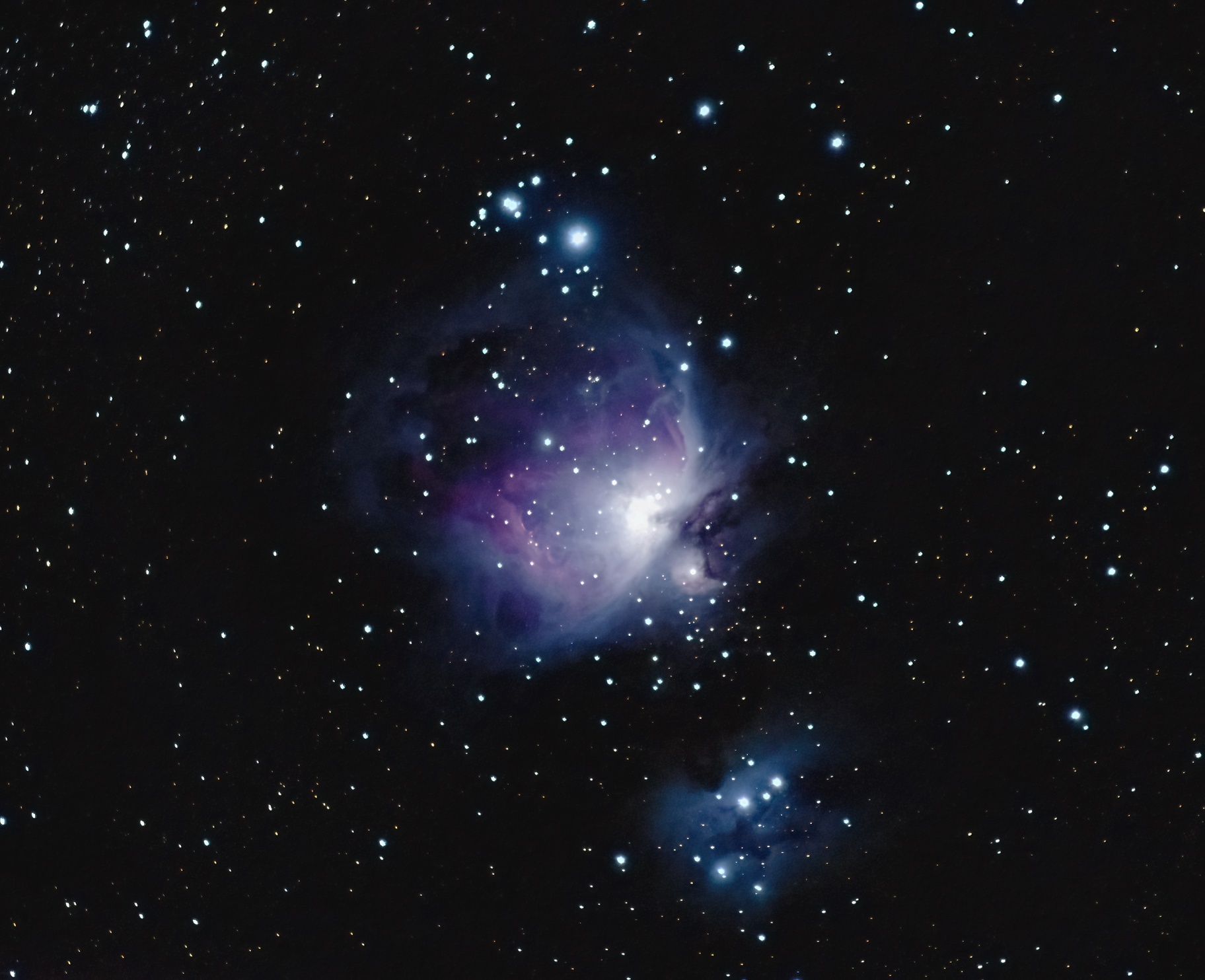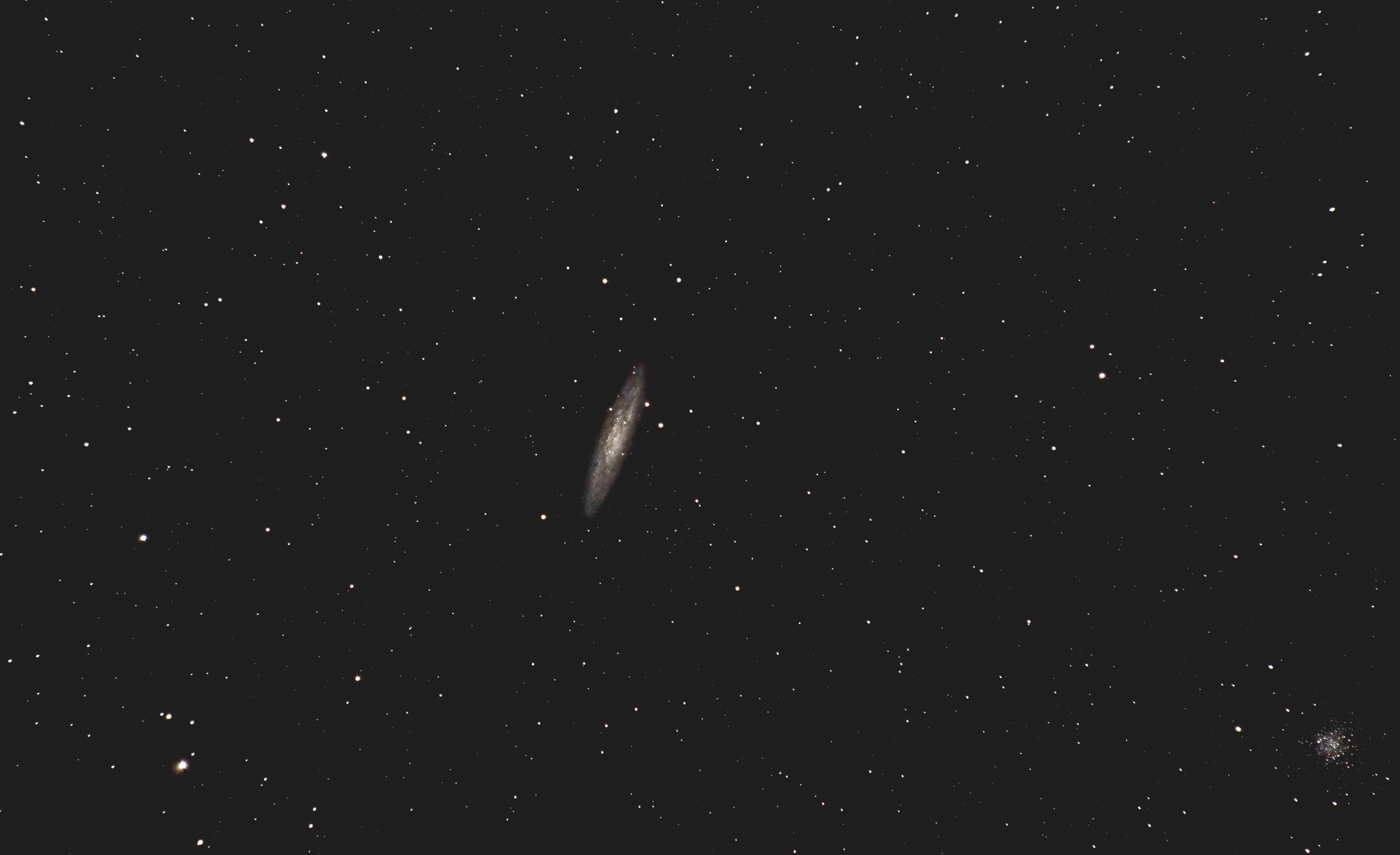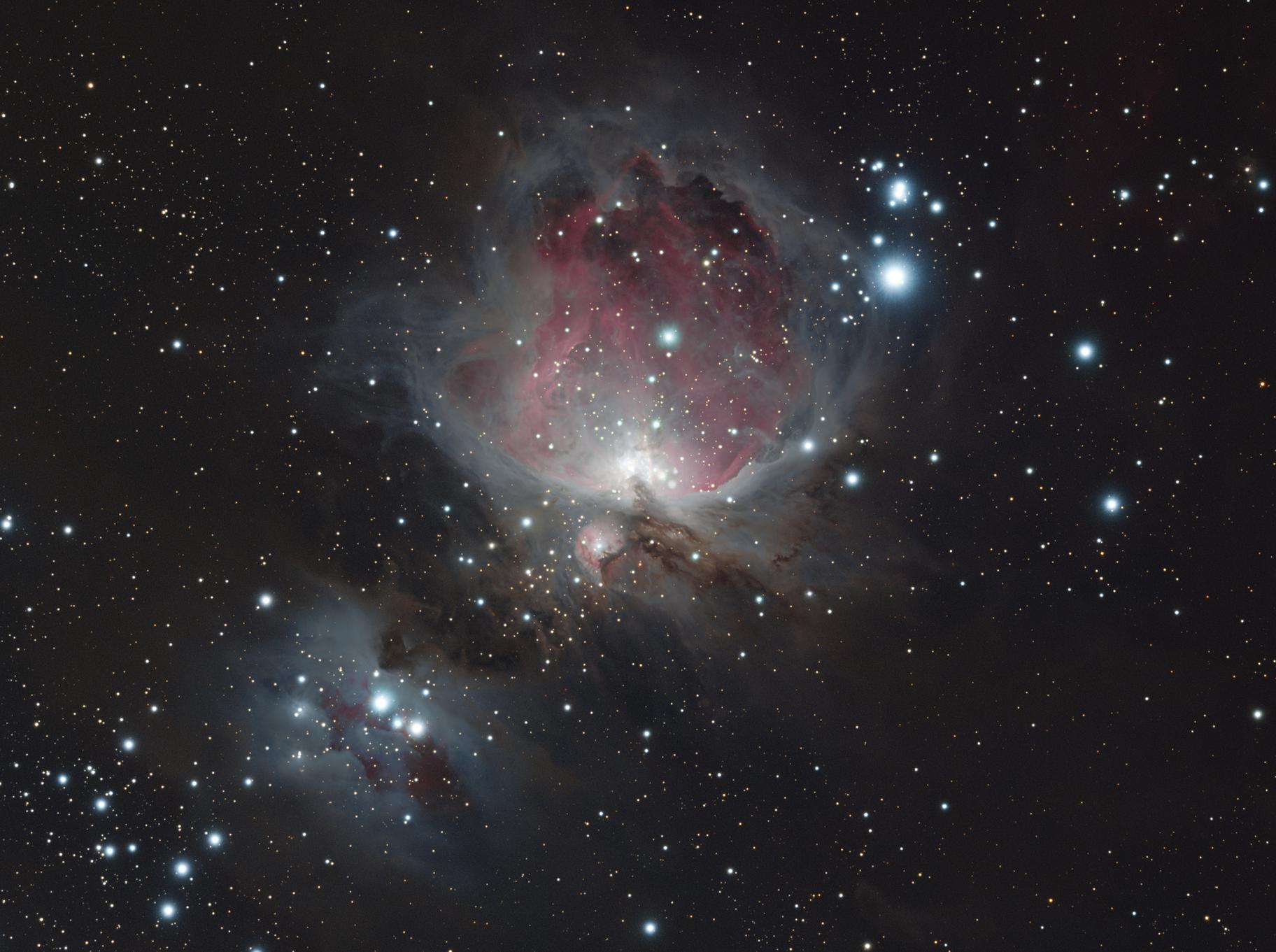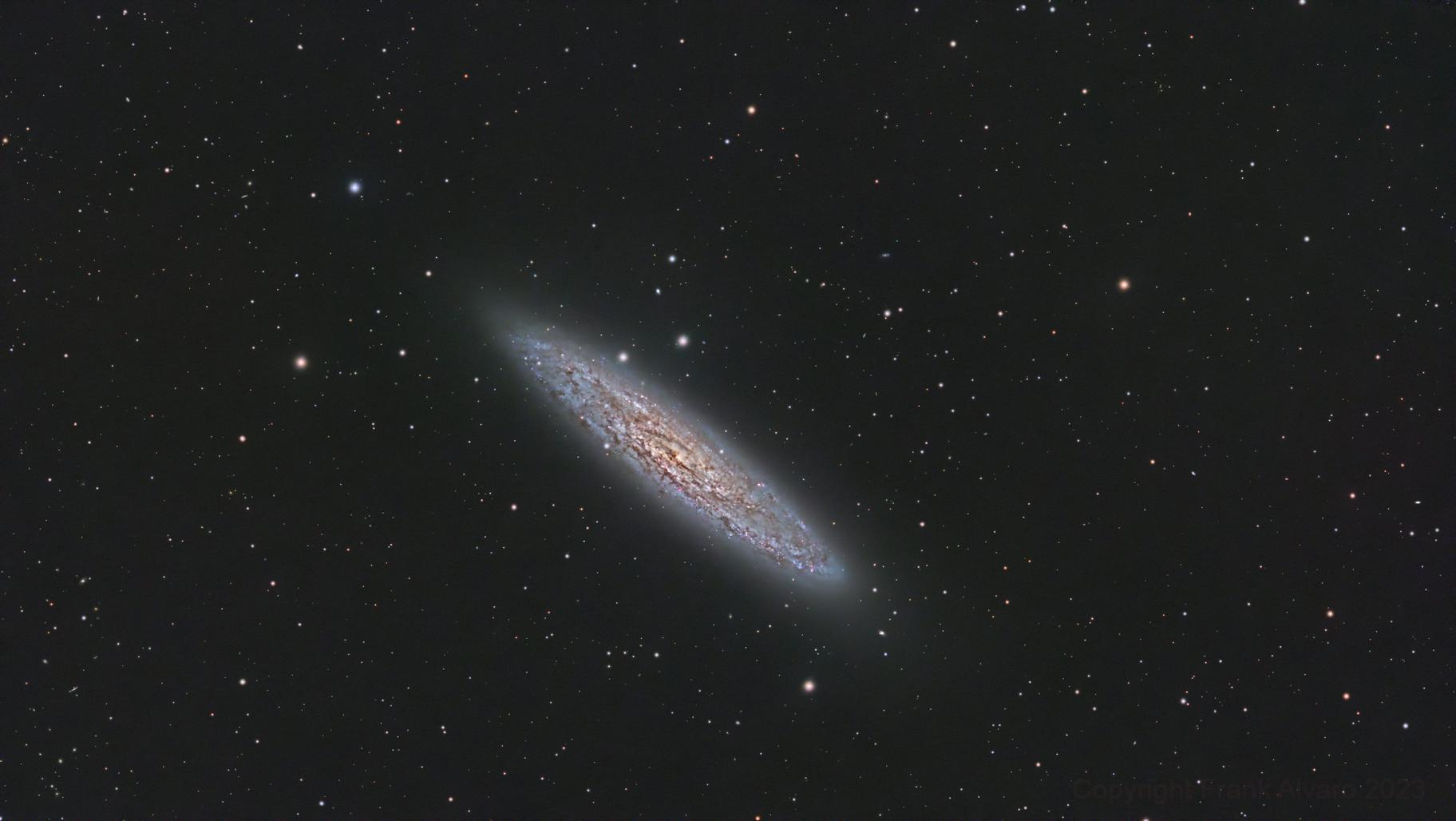Sometimes I find it really useful to take a step back and remember why we keep doing this hobby for such a long time. I have here, a demonstration from my own personal collection of images that highlights one of the many reasons I continue to love astrophotography.
Here's NGC3576 - The Statue of Liberty.
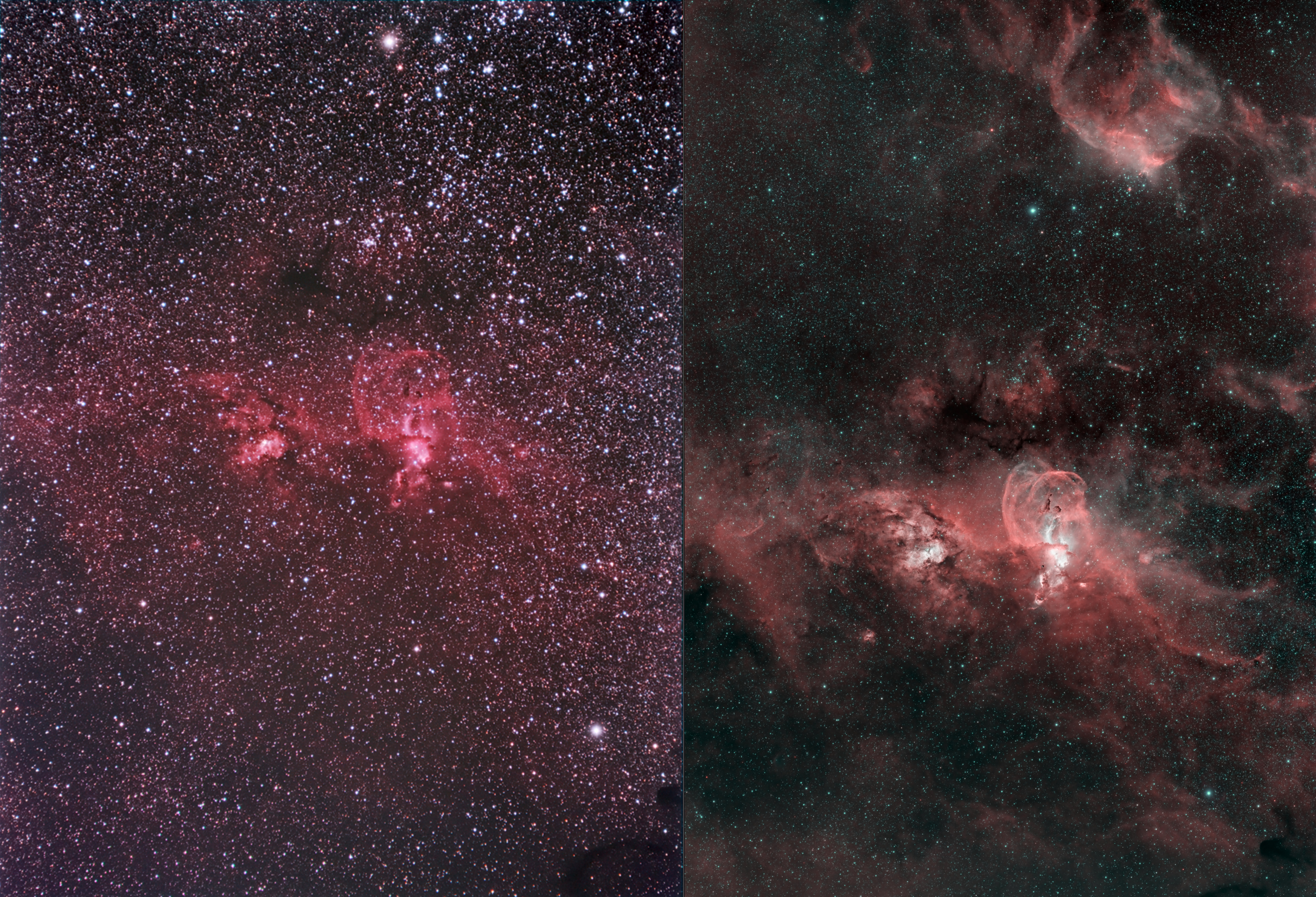
Left hand side:
January 10, 2010. (I'd been into astrophotography for 2 or 3 years by then)
TMB 80/480 triplet APO
SBIG ST8300M with Astrodon LRGB filters
Guided with QHY5M and OAG
Skywatcher HEQ5 Pro
L:240min R:30min G:30min B: 30min All in 5 min subs - 5.5hrs total exposure.
Right hand side:
April 23, 2024.
Askar 65PHQ Quintuplet APO
Player One Artemis C Pro
Guided with ASI120MM mini and OAG
Askar D1 Ha/OIII filter
Avalon Instruments M-Zero
6.5hrs exposure (110x3min)
Both images were shot within 20km of eachother geographically - very similar sky conditions.
Whilst technically, I don't see that there's too much gap between my two rigs over the years, the Optics in the TMB were arguably better (when you took the time to ensure best focus, and correct backfocus for the flattener) The mono KAF-8300 in the ST8300M was noisier, but I think more sensitive (especially in Ha) than the colour IMX294 in my current camera, the M-Zero is a nicer mount than the HEQ5 Pro, dollar for dollar, the HEQ5 is FAR superior in that it will achieve similar guiding results as the M-zero for about 1/5th the price.
The software to process the images has obviously changed - the 2010 image was processed entirely in photoshop with calibration/registration/integration handled by DeepSkyStacker, the image from 2024 was processed in PixInsight from start to finish...
The main thing though, is 14 years.... 14 years of trial and error... 14 years of polar aligning, 14 years of understanding your gears limitations, strengths and weaknesses... 14 years of understanding calibration of data, and best methods to do that... 14 years of know how much data you'll need etc...
You can become very good in this hobby very quickly, however, for most people, I think there is a pretty steep improvement early on, then your improvement plateaus. It's important to remember that even small steps forward are steps forward..
While I understand that the 2024 image is not perfect by any stretch of the imagination, it represents a fantastic improvement over the last time I shot this target, and that's all I need to see in order to keep on pushing forward in this amazing hobby.
Note: I'm colorblind (deuteranopia) and so my ability to correctly perceive red/green is fairly impared.. I basically have to run SPCC and then trust the output of that, and my understanding of the histogram.
I'd love to see some other people post images of their progress - especially with a number of years between images.
Here's NGC3576 - The Statue of Liberty.

Left hand side:
January 10, 2010. (I'd been into astrophotography for 2 or 3 years by then)
TMB 80/480 triplet APO
SBIG ST8300M with Astrodon LRGB filters
Guided with QHY5M and OAG
Skywatcher HEQ5 Pro
L:240min R:30min G:30min B: 30min All in 5 min subs - 5.5hrs total exposure.
Right hand side:
April 23, 2024.
Askar 65PHQ Quintuplet APO
Player One Artemis C Pro
Guided with ASI120MM mini and OAG
Askar D1 Ha/OIII filter
Avalon Instruments M-Zero
6.5hrs exposure (110x3min)
Both images were shot within 20km of eachother geographically - very similar sky conditions.
Whilst technically, I don't see that there's too much gap between my two rigs over the years, the Optics in the TMB were arguably better (when you took the time to ensure best focus, and correct backfocus for the flattener) The mono KAF-8300 in the ST8300M was noisier, but I think more sensitive (especially in Ha) than the colour IMX294 in my current camera, the M-Zero is a nicer mount than the HEQ5 Pro, dollar for dollar, the HEQ5 is FAR superior in that it will achieve similar guiding results as the M-zero for about 1/5th the price.
The software to process the images has obviously changed - the 2010 image was processed entirely in photoshop with calibration/registration/integration handled by DeepSkyStacker, the image from 2024 was processed in PixInsight from start to finish...
The main thing though, is 14 years.... 14 years of trial and error... 14 years of polar aligning, 14 years of understanding your gears limitations, strengths and weaknesses... 14 years of understanding calibration of data, and best methods to do that... 14 years of know how much data you'll need etc...
You can become very good in this hobby very quickly, however, for most people, I think there is a pretty steep improvement early on, then your improvement plateaus. It's important to remember that even small steps forward are steps forward..
While I understand that the 2024 image is not perfect by any stretch of the imagination, it represents a fantastic improvement over the last time I shot this target, and that's all I need to see in order to keep on pushing forward in this amazing hobby.
Note: I'm colorblind (deuteranopia) and so my ability to correctly perceive red/green is fairly impared.. I basically have to run SPCC and then trust the output of that, and my understanding of the histogram.
I'd love to see some other people post images of their progress - especially with a number of years between images.

